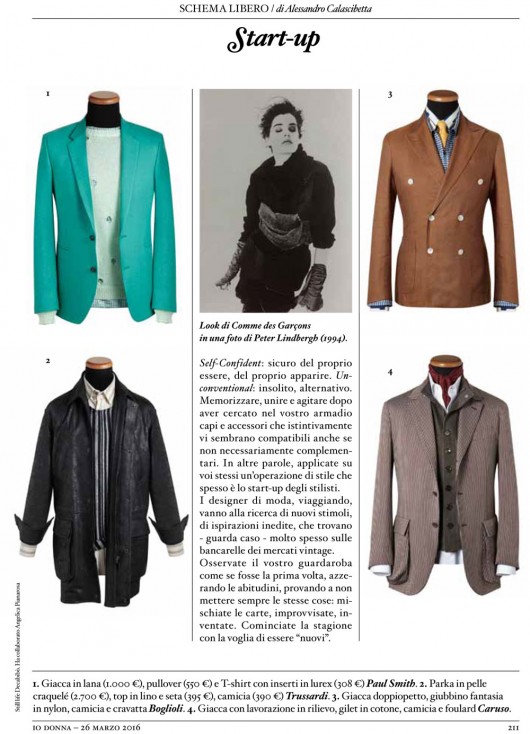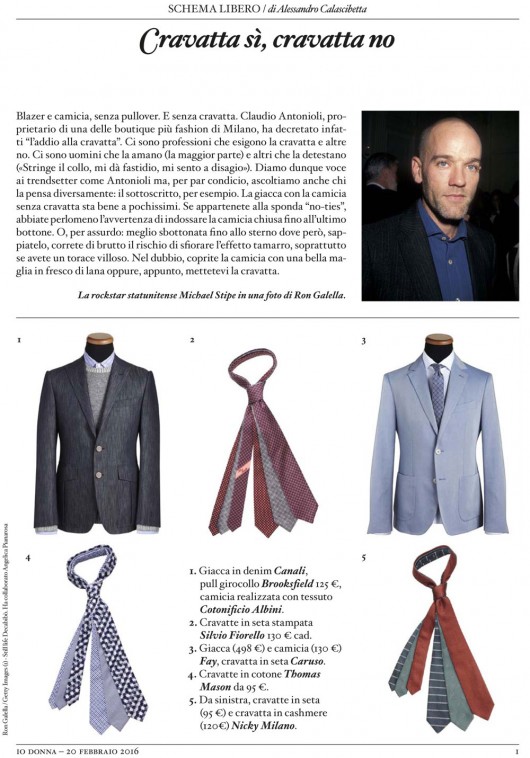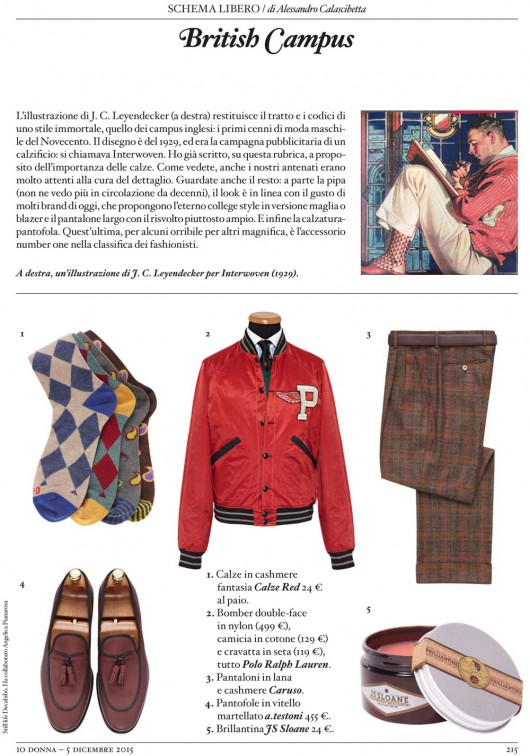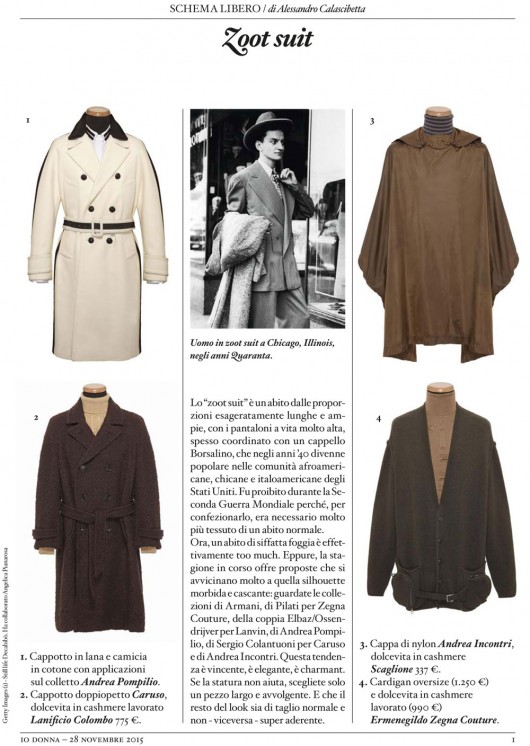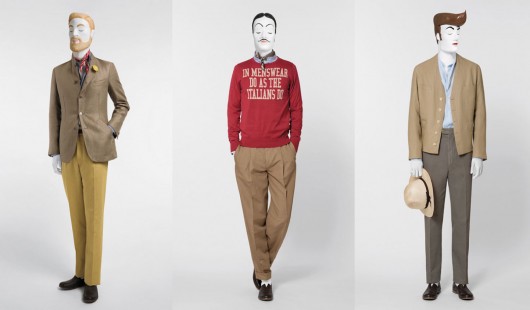
Tre look della s/s 2015 di Caruso disegnati da Sergio Colantuoni
Nel mondo dell’etica della moda le posizioni dei singoli aderenti difficilmente sono unitarie: c’è chi si focalizza sull’impatto ambientale, chi sulle produzioni estere di nicchia eseguite da gruppi di donne da rendere indipendenti, chi ancora sulla qualità biologica dei tessuti. Fra le tante opinioni spicca, per la sua particolarità, quella di Umberto Angeloni, presidente della Caruso Menswear di Soragna (Parma), che del rapporto qualità/prezzo ha fatto una delle proprie battaglie. La sua azienda ha ottenuto il riconoscimento ISO dall’International Organization for Standardization per l’organizzazione interna. Si tratta dell’unico marchio italiano a potersene fregiare. Ma di cosa si tratta? In poche parole, della certificazione di un impegno: mettere la migliore organizzazione possibile affinchè l’acquirente abbia il miglior prodotto possibile al minor prezzo possibile. Cosa che non comporta ovviamente il low cost ma che garantisce gli standard di qualità espressi dal prezzo. Per Angeloni, se il bello è soggettivo, non lo è il modo di arrivarvi. In sintesi, le opinioni non si possono misurare, i costi si. E della propria motivazione devono potere rispondere. Si tratta di una posizione, quella di Angeloni, quasi unica nel nostro panorama dove spesso si confondono etica e pauperismo. Una tesi che fa riferimento come base anche alle qualità necessarie per salvare il Made in Italy dalla globalizzazione del prodotto. Se la moda italiana perderà quelle caratteristiche di cura, originalità, qualità che l’hanno resa celebre assumendo il dettato di una confezione anonima e trascurata, sarà veramente la fine. Il nostro prodotto diventerà uguale agli altri ma sarà troppo caro e quindi fuori mercato. La concorrenza ci conta e ci spera. Luisa Ciuni
In the ethics of fashion … Continua a leggere →





